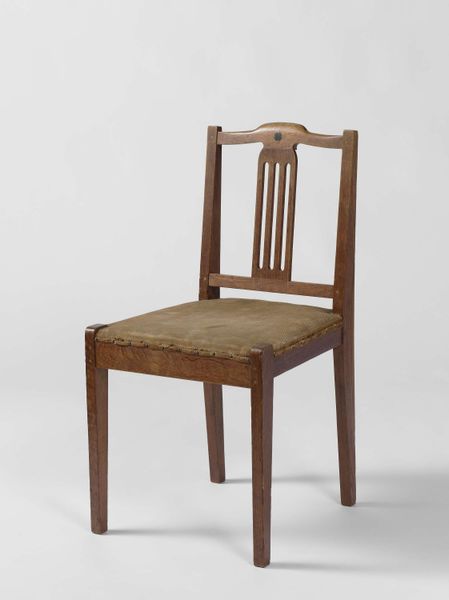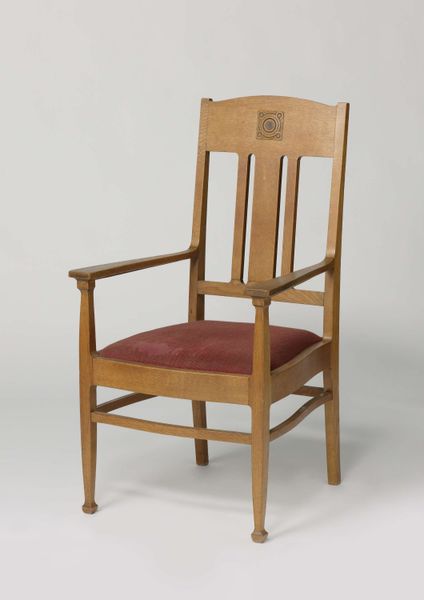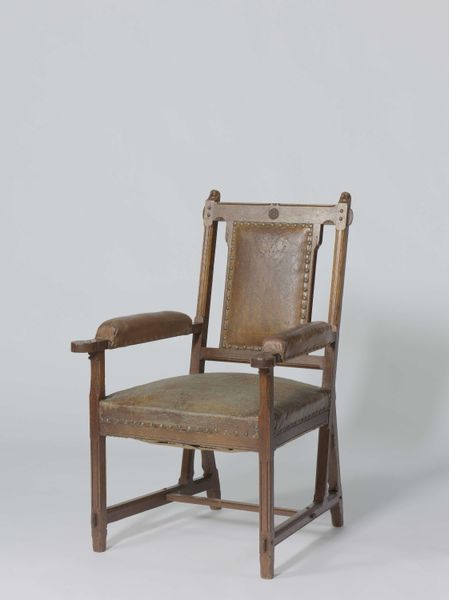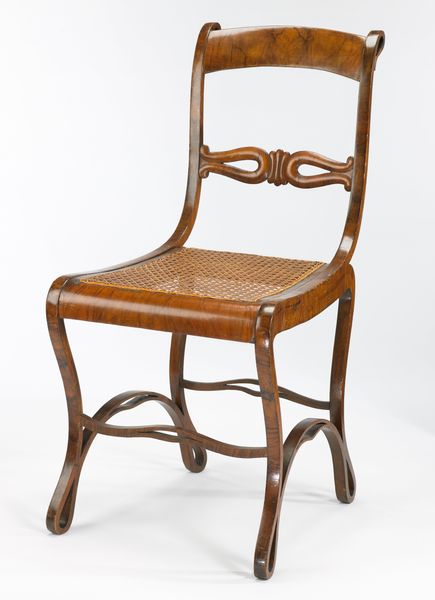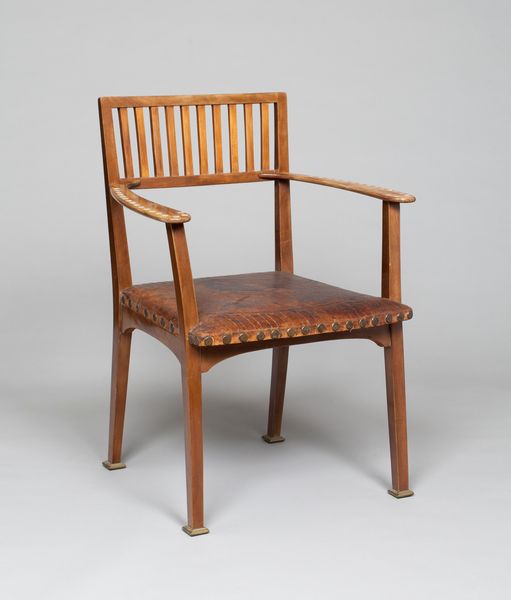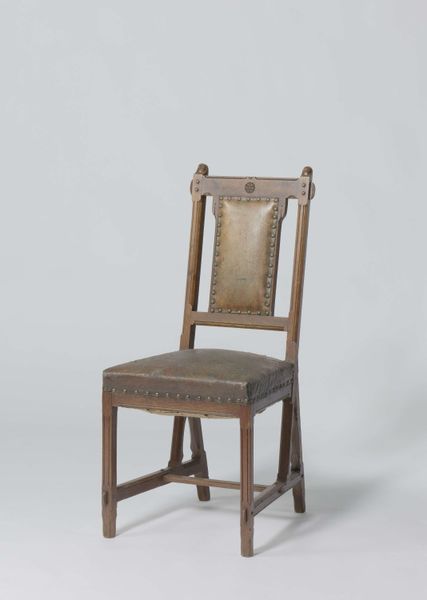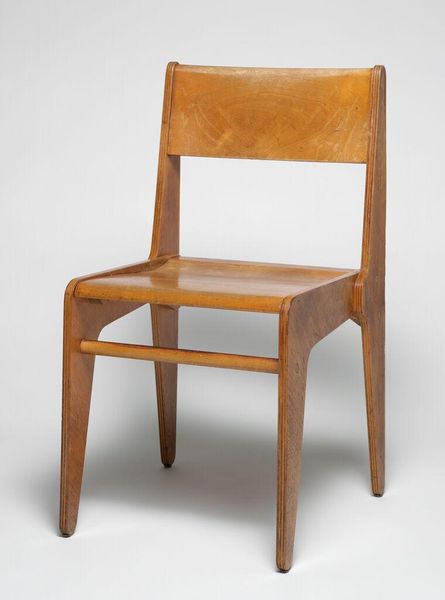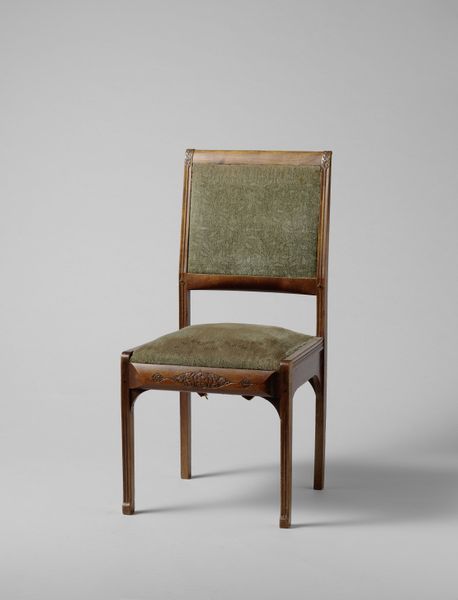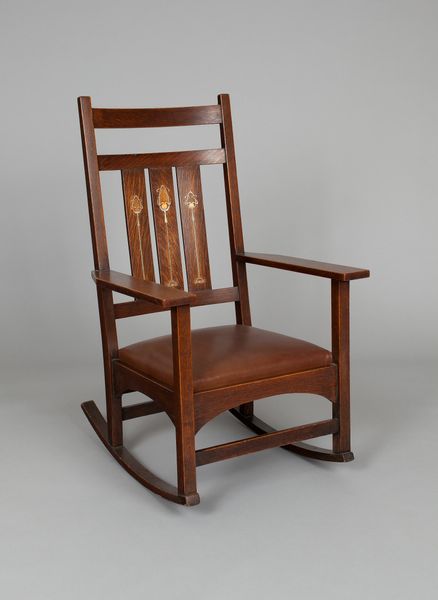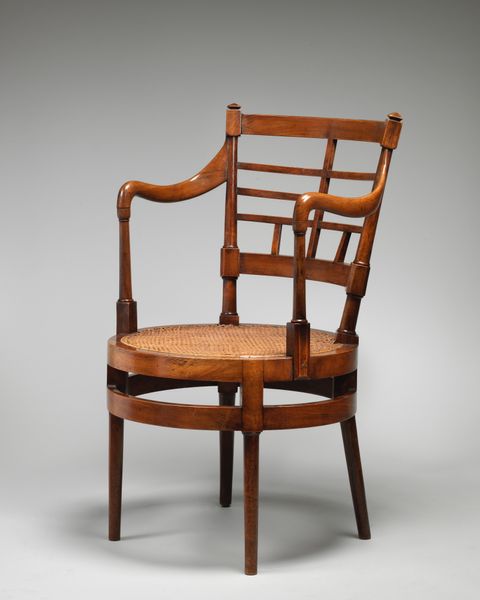
wood
#
arts-&-crafts-movement
#
furniture
#
geometric
#
wood
Dimensions: height 94 cm, width 52 cm, depth 52.5 cm, weight 7.2 kg
Copyright: Rijks Museum: Open Domain
Curator: Gerrit Willem Dijsselhof created this chair around 1900, now held in the Rijksmuseum. The piece is named "Stoel met klimopversiering in rugpaneel" or Chair with Ivy Decoration in Back Panel, made of wood. Editor: My first impression is quiet elegance. It possesses this understated confidence, with its muted tones and geometrical form giving off the feeling of solid, quality workmanship. Curator: Absolutely, you notice the careful geometric design—typical of the Arts and Crafts movement. Look closely at how Dijsselhof employs simple, functional forms without sacrificing decorative touches, as seen in the stylized ivy detailing at the top of the back panel. For him, material integrity was key. Editor: The ivy itself is an interesting choice. Ivy often symbolizes attachment, loyalty, and eternity. I wonder if Dijsselhof intended for this chair to evoke those values within a domestic space. The plant also implies growth and resilience, like the home itself. Curator: Intriguing thought. Thinking about its manufacture, we have to remember the Arts and Crafts movement prized handcrafted quality over mass-produced goods. Each element, carefully considered and skillfully executed, speaks to the labor and time involved in its creation. The chair is not just furniture; it embodies a commitment to artisanal practices. Editor: Right, and I can feel that tactile element even in the image. Its wooden form must be a sensory pleasure to behold in person. The seat cushion must enhance its inviting feeling. To me, it's a timeless emblem of domestic stability and nature's gentle persistence. Curator: Considering this was made during a period of industrialization and urban expansion, its homage to the natural world becomes even more meaningful as a reflection of society. This brings a whole new perspective on appreciating functional design. Editor: It's given me plenty to contemplate. It makes you question how even everyday objects can embody complex meanings and cultural values.
Comments
No comments
Be the first to comment and join the conversation on the ultimate creative platform.
